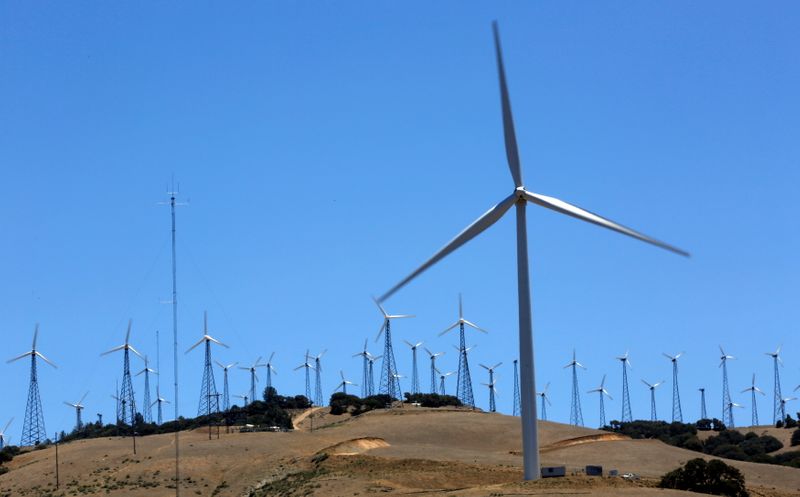(Reuters) -General Electric Co’s plan to spin off energy units into a standalone company could attract investors looking for a well-known name in renewables if they can overlook legacy fossil-fuel operations, financial experts said.
Earlier on Tuesday, the 129-year-old conglomerate outlined a plan to split into three publicly traded companies focused on energy, healthcare and aviation.
The energy unit will combine existing wind and gas-fired power turbines and services, and software businesses. The spinoff would be complete in 2024, GE said.
“Customers need GE at its best and at its most focused to help them navigate the energy transition,” Chief Executive Officer Larry Culp said in an interview, referring to utilities and others now moving to solar, wind and hydropower.
The plan echoes that of GE rival Siemens AG, which in 2020 spun off its power division to form Siemens Energy. It is also similar to electric utilities Enel [ENEI.MI] and Iberdrola’s [IBE.MC] embrace of renewable power over fossil fuels.
For GE, the divestment could unlock value from component businesses and be welcomed by investors valuing pure-play companies over conglomerates, said Dan Pickering, chief investment officer of financial services firm Pickering Energy Partners.
CREDIBLE PLAYER
“Investors will welcome a known franchise,” said Pickering. The GE energy unit’s size and reputation will make the spinoff “a meaningful and credible player in the business,” he said.
Colin Scarola, an equity analyst at investment firm CFRA Research, added, the spinoff could lead to “value creation” in businesses that “in aggregate have been shrinking and losing money both before and since the pandemic.”
Shares touched a 3-1/2 year high on the breakup, and finished up 2.6% at $111.29, compared with a 0.35% drop in the S&P 500 index.
The energy business would encompass equipment and services for gas, coal and wind turbines, hydro-, nuclear and electric power generation. And it would include renewables and digital software operations.
Servicing coal-fired power plants, which GE classifies as steam, will be an issue for some investors.
“We’d like to see some resolution for what they’re going to do with their steam business,” said Matt Breidert, managing director for energy transition investing at fund manager Ecofin. GE, he said, needs “to be a market leader in sustainability, and they’re not there yet.”
Another hurdle is the loss-making renewables business, which includes wind turbines. That unit has not achieved an annual profit since 2018, and posted a third-quarter loss of $151 million, compared with a $204 million profit in GE’s power group which includes gas turbines.
The company also holds a 16% stake in oilfield services firm Baker Hughes Co remaining from its ill-timed and short-lived 2017 acquisition. Baker Hughes is moving to offer energy transition services and could compete with the future GE energy spinoff.
But the projected size of the market may prove more enticing. Annual spending to limit global warming to under 1.5 degrees Celsius by 2050 could cost more than $3 trillion, estimates the UN-backed International Renewable Energy Agency (IRENA).
(Reporting by Liz Hampton in Denver and Rajesh Kumar Singh in ChicagoAdditional reporting by Scott DiSavino in New YorkEditing by Matthew Lewis)





















